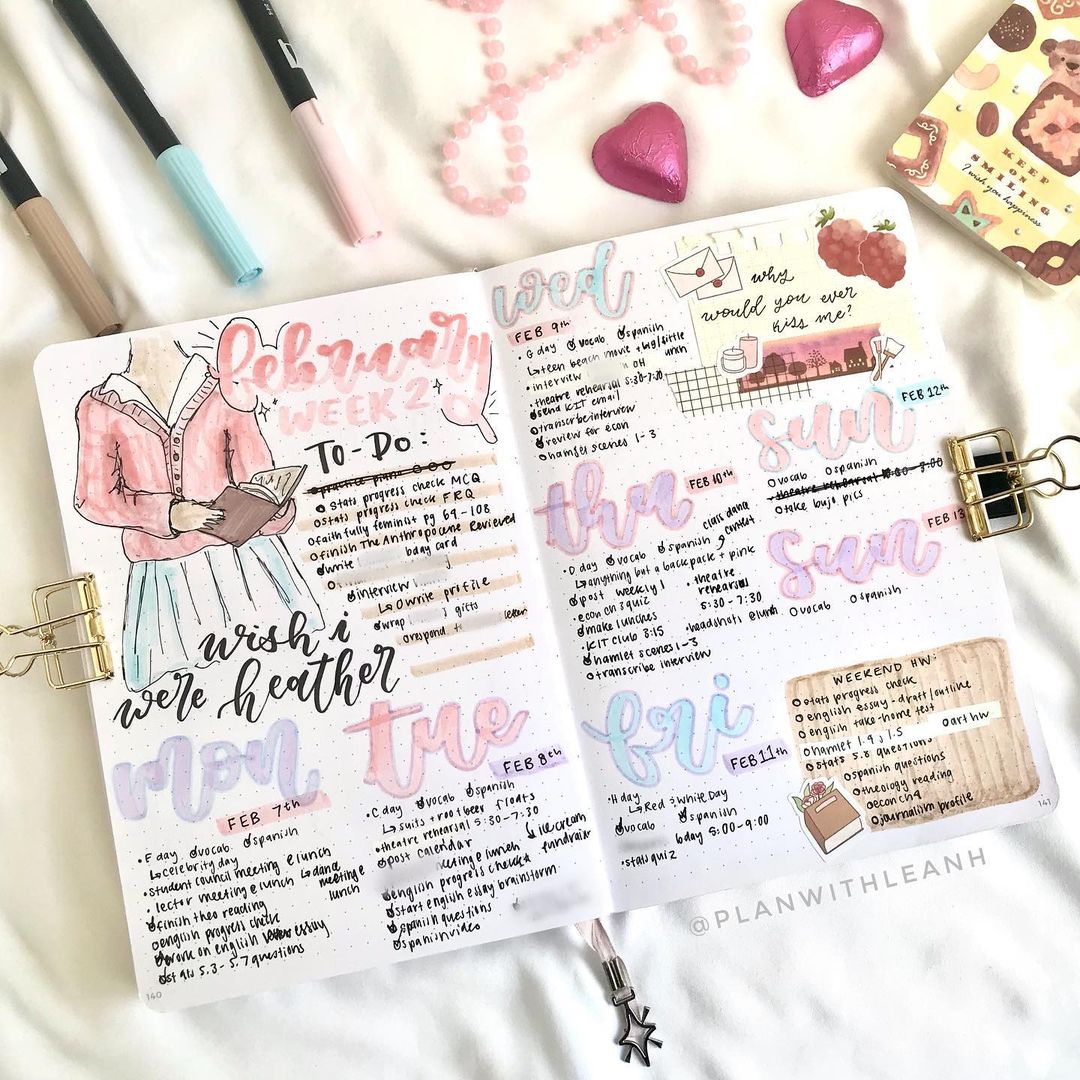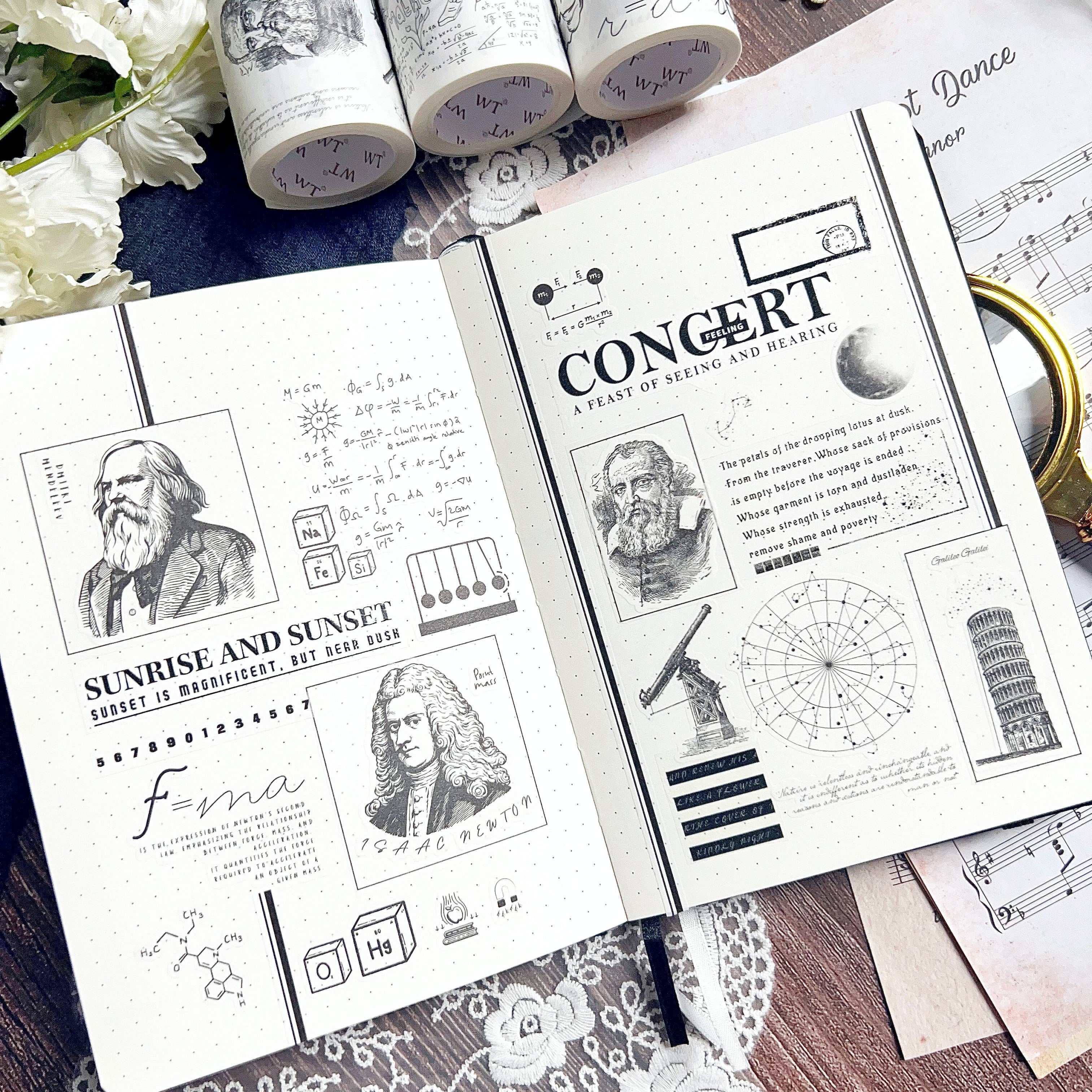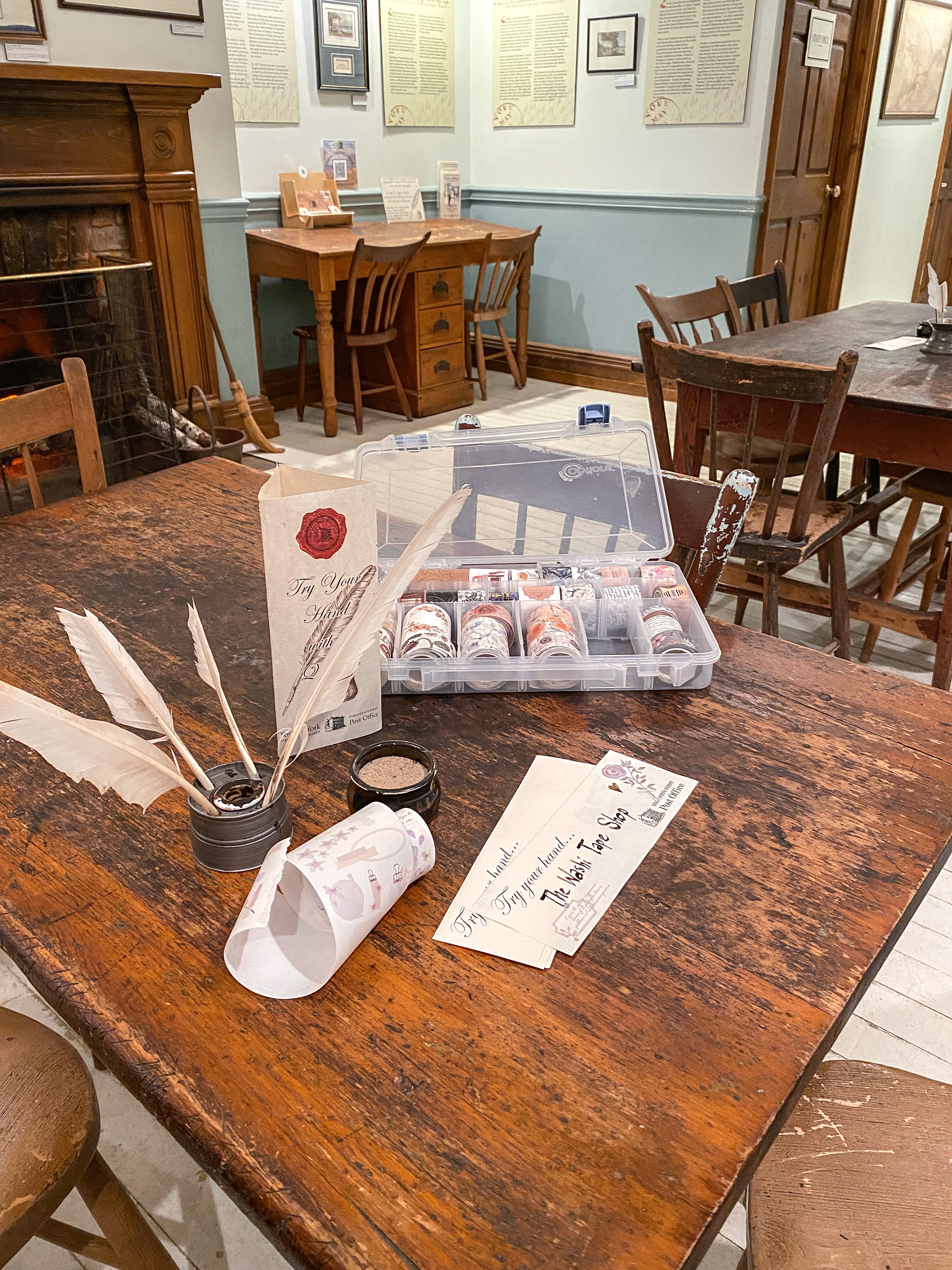Le Anh is a recent high school graduate who uses a journal in her day-to-day life, primarily as an avenue to express her creativity, and also as an organisational tool.

Looking at Le Anh's journal, her beautiful spreads make it obvious that journaling is an important creative outlet of hers, as it is full to the brim with bold, thoughtful designs.

We interviewed Le Anh to learn more about her journal and recommendations for fellow enthusiasts:
Tell us a bit about yourself and how you use your journal.
My name is Le Anh and I recently graduated from high school. I primarily use my bullet journal as a planner, with spreads dedicated to monthly planning like calendar and goals pages as well as weekly planning spreads.

I also use my journal to document my life; one of the reasons why I like physical planning as opposed to digital is that there is a physical record of my life that I can go and look back on.

For instance, one of the pages I have each month as part of my setup is a “highlights” page, which has a line for each day of the month that I fill out each night talking about the things I did that day.

I enjoy looking back on past months and seeing what I was up to. I also use habit, sleep, and phone usage trackers which help me develop habits such as reading before bed or not using my phone in the morning. I think having a dedicated page for these allows me to see my progress throughout the months and years.

How much time do you dedicate to journaling each day/week?
It definitely depends on the month. I’ve gone through phases where I enjoy making a new weekly spread every week, in which case I bullet journal for about an hour a week plus a couple additional hours at the end of the month to set up my spreads for the following month.
Recently, I’ve been preferring making all my spreads for the month at once because it allows me to batch my content for my Instagram page quicker.

The time I dedicate usually consists of about two hours sketching out spreads over the course of a week or so, and then another two to three hours with pen and color.

Taking photos of my work, editing them, and making post drafts takes another roughly two hours. That said, the time journaling takes also depends on how intricate the spreads and themes I want to make are.

For instance, I chose very simple themes during the fall of my Senior year, so that I could make my spreads very quickly and not focus on the artistic aspect so much. When my schedule is freer, I allow myself to put more time into decorating my spreads.

Which spreads do you find most useful for your routine?
My weekly spreads are definitely the most useful in my day-to-day life. I find it really important to plan out my daily tasks, from school work to class schedules to personal tasks.

Writing down everything I have to do each day helps get it out of my head so I no longer have to worry about it. My weekly spreads also help me manage my time by allowing me to see if my daily tasks are about even every day or if some days are heavier and some are lighter.

Can you take us through the process of using journal trackers? How often do you update them, and how do you ensure that you retain the habit of maintaining a tracker?
My use of trackers has developed over the years to what I need most in my life. For instance, the first trackers I ever used were when ballet was a large part of my life, so I would track the days I did certain exercises and stretches.

When I didn’t need to track such specific exercises anymore, but instead had other things I wanted to track like reading or eating, I transitioned from strictly an exercise tracker to a more general habit tracker. Each month, I think about the habits that I want to track– which trackers have been serving me and which have been more useless, as well as what new habits I might want to introduce that month.

I recommend starting with four to six habits to track, as this is easier to remember and manage. Eventually, I started going up in numbers and now I do nine, though largely because I like the way it looks on paper.
A while later I started tracking my sleeping hours and phone usage hours. On my spreads, I indicate a goal with a dotted line, for instance sleeping from 11:00 pm to 7:00 am and using my phone no more than three hours a day.

This allows me to see each day if I met my goal or not, which can inform how I go about my next day. I also enjoy looking back on the month and seeing how well I slept and how much I used my phone, and seeing if this affected my general mood or productivity level throughout the month.

One crucial aspect to make trackers effective is actually creating the habit of updating them. This took me a while to really get into my system, but now, it is ingrained in me to sit down and fill out my trackers right before bed each night.

Some advice I have for developing this habit is to write “fill out habit tracker” as a to-do in your daily box so that you see it and are reminded of it throughout the day. You can also set a reminder on your phone for the same time each night to fill out your trackers. I definitely recommend giving trackers a try!

Some of your spreads are less focused on organization or productivity, and are more decorative or fun instead -- for example, your lovely playlist spreads and dream home collab. These spreads are stunning, but they are unrelated to your weekly spreads or trackers. Would you say that the main purpose of these spreads is to relax and express yourself creatively? If so, do you consider this a major benefit of using a journal instead of filling in a pre-designed planner?
One hundred percent, the purpose of my bullet journal is first a creative outlet and then a personal planner. Yes, I do enjoy that I can use my bullet journal to customize my planning to my needs, but at the end of the day, a pre-designed planner would do just the trick.

The reason why I started bullet journalling and why I continue was as a way to force myself to make time for art and creativity as I started high school. Doing art for fun is not a top priority for me, but when it becomes a necessity in order to have my planner, then I force myself to make time to relax and do art but in a form that makes me feel productive.

More decorative spreads that I have done, such as playlist spreads and collabs have been a result of the community of artists I have formed online who have given me such great inspiration to take my journal to the next level and to incorporate fun and creative spreads into my planner.

The art aspect of journaling is what I love most, and I love to look back on my past journals to see how my art style has changed and improved throughout the years.
I am so grateful that I made bullet journalling a part of my life, because I feel I have become a much better artist and much more creative person, and I don’t think I would have realized just how much I love art and need it in my life.

Many of your spreads feature bold designs and bright colors. What tools/stationery do you recommend others use to achieve a similar style?
When I started bullet journalling and learning how to do calligraphy, my #1 tool was Crayola Supertips. These are so great for getting the hang of calligraphy without the complication of an actual brush pen.

They also come in so many colors and are much more affordable than fancier markers. After that, I started slowly building my collection of Tombow Dual Brush Pens, which are even better for calligraphy as well as getting nice variation in line thickness for drawings.

The Dual Brush Pens come in so many unique colors, which I really love, and they also come in color packs like “pastel” and “tropical” which help create color palettes.
Another piece of stationery that I absolutely love is the Tombow Fudenosuke hard tip black brush pen. I use this so often for smaller calligraphy in my spreads, often for page titles or day names. I think they make this pen in other colors as well, which is great if you want your text to be colored.

Finally, my go-to black pen for drawing as well as writing is the Pentel Energel pen, either in .5 or .38 depending on how thick you like your strokes. This pen writes so smoothly and evenly and has really minimal smudging. It’s also great because you can get ink refills, saving you the cost and waste of buying a new pen every time the ink runs out.

Finally, in the past couple years (but not when I first started bullet journalling) I have started incorporating washi tapes and stickers into my spreads. If you are unsure of what washi tape to buy, my recommendation is to start with gridded washi tape in many colors– it’s a great staple.

Then, you can start expanding your collection to fun colors and patterns. I also love to get sticker sheets from different stores and small businesses. I find that washis and stickers are a really quick and easy way to spice up a simple spread for when you don’t have time/effort/skill to draw a lot.

Thank you to Le Anh for answering our questions. Follow her on Instagram here.


